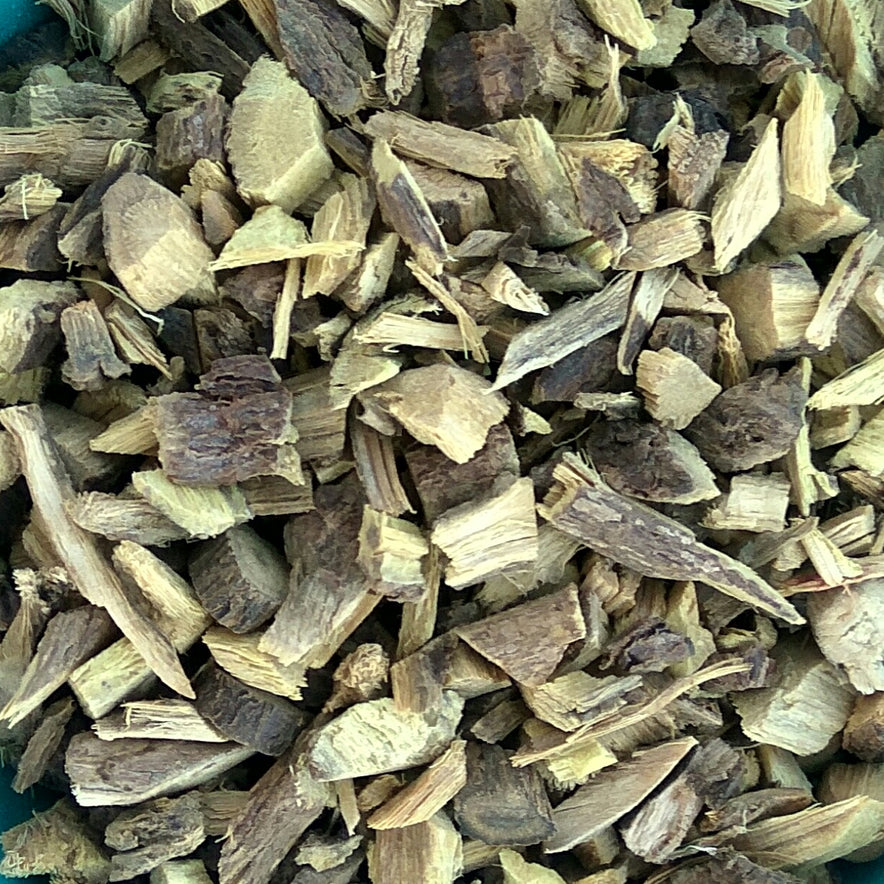
Liquorice / Licorice Root (Glycyrrhiza Glabra)
Licorice has come to be associated with a strong candy flavor, but the plant itself — Glycyrrhiza glabra — has distinct qualities. Licorice root is an adaptogen plant that grows throughout Europe, the Mediterranean, and Asia. It's been used for thousands of years for a variety of uses, most notably as a leaky gut remedy.
It works well for functional dyspepsia, which includes not just heartburn but also nausea, indigestion, and stomach discomfort. Licorice root is an anti-inflammatory and demulcent plant that may be used to treat ulcers, sore throats, and coughs. It can also be used as a leaky gut supplement, and its antiviral qualities make it a potentially strong immune system ally.
Licorice has been shown to help the body manage cortisol – the stress hormone — more effectively, giving your adrenals a rest. It turns out that it's one of the most important adaptogen herbs for boosting stress resistance.
Finally, Licorice root appears to have an estrogen-like action in women, making it a viable solution for menstrual and fertility-related issues, including as a natural cure for PMS, or stomach cramps, as well as muscular cramps.
Caution
🡆When Glycyrrhiza glabra is overused, it can cause negative side effects such as high blood pressure, low potassium levels, edema (swelling), chronic fatigue, and other issues.
🡆STOP taking licorice root two weeks before surgery, as it may interfere with blood pressure control during surgical procedures.
Recommended Dosage
◉ 1-3 teaspoons of loose tea (or 3g up to 3 times) daily. If more than one herbal mixture is consumed at the same period of time, reduce the amount of tea accordingly.
◉ When herbs are used for an extended period of time, it is suggested to consume a herbal remedy with a ratio of 3 to 1. For example:
- If you choose to take it for 3 weeks, have a one-week pause.
- If it is taken for a 30-day period, have a 10-day pause.
That does not apply to herbs and fruits that have a laxative effect.
Notes
◉ Should be stored in airtight glass containers -in a cool, dark, and dry place- to preserve the flavor, texture, and properties.
◉ Before adding a new herbal remedy or supplement to your daily routine, you should consult with a medical doctor or holistic health practitioner.
Herbal Tea Brewing Instructions
- Heat the water to just the point when it starts to boil.
- Add 1 teaspoon of loose tea, to a tea infuser or tea bag, for every 180ml - 240ml of water.
- Pour the heated water (right off the boil) over the tea, cover your cup, and steep for 7-10 minutes or longer.
- Add honey or stevia for sweetness, if desired.
Follow these additional steps to make the perfect cup of tea!
